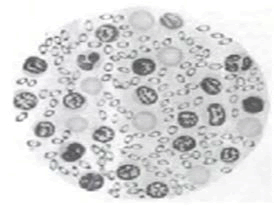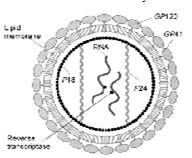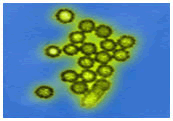Research Article - (2022) Volume 10, Issue 9
Comparison of COVID-19 with Different Pandemic in History
*Correspondence: Shivani Mittal, Department of Prosthodontics, Sharad Pawar Dental College and Hospital, Datta Meghe Institute of Medical Sciences (Deemed to be university) Sawangi (Meghe) Wardha, Maharashtra, India, Email:
Abstract
All around the course of history, disease outbreaks have devasted humanity and at times, signalling the end of entire civilizations. These diseases spreading across the borders of worldwide are term as a pandemic. At present; the world is suffering from COVID-19 pandemic. History shows that many such pandemics have occurred earlier also. Some of them are the plague of Justinian, bubonic plague, Spanish flu SARS, HIV/AIDS, and Swine flu. The global impact of these pandemics was uncertain. The spread of diseases was due to different factors which led to a high mortality rate.
Keywords
Devasted, Signalling, Plague of Justinian, Bubonic plague, MortalityIntroduction
An epidemic is an outbreak that spreads over a larger geographical area. An epidemic that spreads globally is a pandemic [1]. WHO (world health organization) therefore, has assessed that the coronavirus can be characterized as a pandemic on 11 march 2020 [2].
The coronavirus is not the first of pandemics; history gives evidence on many such pandemics. The earliest record is of "Plague of Justinian". During the reign of the emperor Justinian I (527-565 CE), outbreaks of the plague took place [3]. Then, the bubonic plague (the Black Death) in the 14th century. The 1918 Spanish influenza, which infected more than one-third of the world’s population; There have been several influenza pandemics since 1918. Severe Acute Respiratory Syndrome (SARS) virus in 2003 and HIV/AIDS from 2001 to 2010 [4] and the swine influenza in 2009 [1].
An ongoing outbreak associated with a novel coronavirus, called severe acute respiratory syndrome coronavirus 2 (SARS-CoV-2), was reported in Wuhan, Hubei province, China in December 2019. In the following weeks, infections spread across China and other countries around the world.
On February 12, 2020, WHO named the disease caused by the novel coronavirus as Coronavirus Disease 2019 (COVID-19) [5]?
Materials and Methods
Through the table is well appreciated that of the disease during the most pandemic was spread through viruses. And the mode of spread of COVID-19 is similar to that of Spanish flue and severe acute respiratory syndrome (Table 1).
| Sr. No | Name of Pandemic | Causative Organism | Mode of Spread |
|---|---|---|---|
| 1 | Plague of Justinian | Not known | From black rats, that travelled on grain ships and carts from one country to another and spread the disease in the city [3]. |
| 2 | Bubonic Plague (The Black Gate) | Yersinia Pestis [6]. Smear; Courtesy from [12] . |
Spread by fleas [6]. |
| 3 | Spanish Flu | Influenza Virus, Subtype A (H1N1) of the virus [7]. | Highly Contagious: When an infected person coughs, sneezes or talks, respiratory droplets that are generated and transmitted into the air, can cause infection [7]. |
| 4 | Severe Acute Respiratory Syndrome | Novel Coronavirus [8]. | Through droplets and indirect or direct contact [8]. |
| 5 | HIV/AIDS | Human immunodeficiency viruses [4]. Courtesy from [13]. |
When a healthy person comes in contact with infected blood semen, or vaginal fluid [4]. |
| 6 | Swine H1N1 Influenza | Swine H1N1 Influenza A Virus Courtesy from [9]. Courtesy from [9] |
It is contagious, spread by saliva and mucus particle; pig act as an intermediate host [9]. |
| 7 | COVID-19 | Novel Coronavirus Disease [2].  Courtesy from [5]. |
Through droplets generated when an infected person coughs or sneezes, or through droplets or saliva or discharge from the nose [2]. |
Table 1: Causative agent and mode of spread of pandemic.
As in the table, we can well appreciate that fever is in commonest of the clinical feature in every pandemic. While severe acute respiratory syndrome and swine flu have more common features with COVID-19. And COVID-19 and SARS share a great similarity. Also, the incubation period varies with every disease; making HIV has the highest incubation period and the commonest diagnostic test is PCR (Table 2).
| Sr no. | Pandemic | Incubation period | Clinical Features | How do physicians diagnose |
|---|---|---|---|---|
| 1 | Bubonic plague (The black date) | 2-7 days [6]. | Hot, swollen, tender, and hemorrhagic lymph nodes [6]. | Upon identifying Yersinia pestis organisms in a sample of blood or tissue by demonstrating the surface proteins of the bacteria, or identifying genetic material of the bacteria [6]. |
| 2 | Spanish flu | 1-4 days [7]. | Including nasal hemorrhage, pneumonia, and encephalitis, temperatures of up to 4°C, nephritis-like blood-streaked urine, and coma [7]. | Viral culture, serology, rapid antigen testing [7]. |
| 3 | Severe acute respiratory syndrome | 2-16 days [8]. | High fever (>38°C), cough or breathing difficulty [8]. | Polymerase chain reaction amplification of the SARS-related coronavirus in relevant specimens; Serial chest X-rays may show progressive lung infiltrates; Pulmonary CT-scans may show ground-glass appearance, diffuse or patchy consolidation but no interstitial pattern |
| 4 | HIV/AID | 2-4 weeks [11]. | Fever. Fatigue. Swollen lymph nodes [11]. | Testing for host antibodies; Determination of CD4; PCR of HIV-RNA [11]. |
| 5 | Swine H1N1 influenza | 1-4 days [9]. | Fever, cough, runny nose, sore throat, body aches, chills, and fatigue [9]. | Reverse transcriptase-polymerase chain reaction test (RT-PCR)-virus isolation test, and assays to detect a 4-fold increase in influenza virus antigens [9]. |
| 6 | COVID-19 | 3-14 days [2]. | Cough, fever, tiredness, difficulty breathing (severe cases) [2]. | Nasal secretions, blood, sputum, and Bronchoalveolar Lavage (BAL) collected from suspected; employ enzyme-linked immunosorbent assay (ELISA)or Western blots that detects specific COVID-19 proteins; Molecular approaches are based on Real Time-PCR (RT-PCR) or Northern blot hybridization targeting specific COVID-19 genes; Viral antigens present in the clinical specimens are detected by using direct Immune Fluorescent Assay (IFA) [2]. |
Table 2: The incubation period, clinical features and diagnosis.
| Sr no. | Pandemic | Risk factors |
|---|---|---|
| 1 | Bubonic plague | Include being bitten by Fleas as well as exposure to rodents, scratches or bites from infected domestic cats, contact with individuals with pneumonic plague [6]. |
| 2 | Spanish flu | Length of service in the army, ethnicity, dirty dishes, flies, dust, overcrowding and the weather [7]. |
| 3 | SARS | Having visited any fever clinic or any hospital or having a pre-existing chronic disease (immunocompromised patient), eating out more than once a week and using several types of transportation, including taking a taxi or bus [10]. |
| 4 | HIV/AID | Having unprotected anal or vaginal sex; having another Sexually Transmitted Infection (STI); sharing contaminated needles, syringes and other injecting equipment and drug solutions when injecting drugs; receiving unsafe injections, blood transfusions and tissue transplantation, and medical procedures that involve unsterile cutting or piercing; and experiencing accidental needle stick injuries, including among health workers; immunocompromised patient [11]. |
| 5 | Swine H1N1 influenza | Closely association with pigs; and association with infected human [9]. |
| 6 | COVID-19 | Old age patient, immunocompromised patient, people coming in close contact with an infected person, traveling from an epidemic area [2]. |
Table 3: Risk factors of Pandemic.
Though the above Table 3, we can appreciate that; Immunity plays an important role in any infection, so immuno-compromise the patient will be at high risk for any of the pandemic. Then, contact with the infected people makes contagious spread fast. Therefore, the health worker is at a very high risk of any infection. Then, traveling has come out to be a risk factor; especially from the epidemic area.
Management and treatment: The main reason for the breakdown of any pandemic is the absence of proper treatment protocols. So, for effective management, proper preventive majors can be applied (Table 4).
| Sr no. | pandemic | Preventive majors |
|---|---|---|
| 1 | Bubonic Plague | Lessen the chance of contracting plagued by rodents, or reducing rodent habitat areas around the home, avoiding contact with wild rodents, and wearing gloves while handling carcasses of potentially infected animals. Use repellent for skin and clothing while outdoors or in areas where exposure to fleas is likely. DEET-containing repellent can be applied to skin or clothing, while permethrin can be applied to clothing [6]. |
| 2 | SPANISH FLUE | Identify persons at highest risk of severe influenza and prevent their exposure, infection, and disease through home self-confinement [7]. |
| 3 | Severe acute respiratory syndrome | Wearing masks, Handwashing, isolation of infected patient [8]. |
| 4 | HIV/AID | Use condoms correctly every time you have sex. Don’t inject drugs. If you do, use only sterile injection equipment and water and never share your equipment with others; pre-exposure prophylaxis (PrEP) involves taking a specific HIV medicine every day to reduce the risk of HIV infection [11]. |
| 5 | Swine H1N1 influenza | Wash your hands frequently with soap and running water, Avoid close contact with animals that look or act ill, when possible, and avoid contact with pigs if you are experiencing flu-like symptoms [9]. |
| 6 | COVID-19 | Wash your hands for 20 seconds with soap and water or alcohol-based hand rub; Cover your nose and mouth with a disposable tissue or flexed elbow when you cough or sneeze; Avoid close contact (1 meter or 3 feet) with infected people; Stay at home and self-isolate yourself [2]. |
Table 4: Few preventive majors have taken during each pandemic.
Commonest prevention measures include washing hands, keeping distance and isolation from avoiding contact with infected patients (Table 5).
| Sr no. | Pandemic | Number of deaths |
|---|---|---|
| 1 | Plague of Justinian | 50 million [3]. |
| 2 | Bubonic plague | 100 million [6]. |
| 3 | Spanish flu | 50 million [7]. |
| 4 | Severe acute respiratory syndrome | 774 deaths [8]. |
| 5 | HIV/AID | 32 million [4]. |
| 6 | Swine H1N1 influenza | 50-100 million [9]. |
| 7 | COVID-19 | 72,614 till date [14]. |
Table 5: Number of deaths of pandemic.
Discussion
Bubonic plague is characterized by acute, necrotizing lymphadenitis; in which the regional lymph nodes that drain the intradermal infection site, and they multiply rapidly [6]. While in HIV also, the early events lead to the establishment of stable viral reservoirs in lymphoid tissues and, at the cellular level, in the form of latently infected resting CD4 + T cells. This will decrease the immunity of the person; which will cause co-infections. Candidiasis Pneumocystis in infants, tuberculosis, Cryptococcosis Progressive, Multifocal Leukoencephalopathy (PML) CMV infection in children, etc. [7-9]. But in COVID-19 there is very less effect on lymph node; whereas a decrease in the number of CD4 cells is noticed in it.
As the causative agent for the Spanish flu and swine flu is the same the pathology of the disease as also the same. The Pathological changes include epithelial cell proliferation, the presence of giant cell infiltrates and an increase in pulmonary macrophages [9,10]. Haemophagocytosis suggestive of cytokine dysregulation has been demonstrated in a subset of the patient body's immune reaction to the virus and the interferon response is the causes of the viral syndrome. The replication of the virus occurs primarily in the upper and lower respiratory tract passages from the time of inoculation and peaks around 48 hours in most patients [11-13].
The pathological features of COVID-19 greatly resemble those seen in SARS coronavirus infection. Peripheral blood was prepared for flow cytometric analysis. We found that the counts of peripheral CD4 and CD8 T cells were substantially reduced, while their status was hyper activated [14].
Conclusion
The best lesson to learn is “prevention is better than cure”; that is the preventive has a major role limit the spread of the disease, though isolation is really important. Also, each pandemic has its risk factors; so, to avoid them is all very important also; every pandemic brings about challenges and also a few lessons with it. So, we should learn from them. These pandemics have some similarities with their differences with COVID-19. It is our prime duty to learn from history, and avoid it from repeating. And also, remember that prevention is always a better option to survive through this by just being safe.
References
- American Medical Association. Jama Patient Page. JAMA 2019; 321:910.
- Coronavirus disease 2019 (COVID-19) Situation Report-51.
- Horgan J. Justinian's Plague (541-542 CE). Ancient History Encyclopedia 2014.
- Jones A, Cremin I. Transformation of HIV from pandemic to low-endemic levels: a public health approach to combination prevention. Lancet 2014; 384:272-279.
- Kannan S, Ali PSS. COVID-19 (Novel Coronavirus 2019) – recent trends. Eur Rev Med Pharmacol Sci 2020; 24:2006-2011.
- Bramanti B, Stenseth N. Plague: A Disease Which Changed the Path of Human Civilization. Springer 2016.
- Morens D, Knudsen T, Kledal T, et al. The Mother of All Pandemics Is 100 Years Old (and Going Strong). Am J Public Health 2018; 7.
- Knudsen TB, Kledal TN, Andersen O, et al. Severe Acute Respiratory Syndrome-a New Coronavirus from the Chinese Dragon' Lair. J Immunol 2003; 58:277-284.
- Jilani T, Jamil R. H1N1 Influenza (Swine Flu). StatPearls-NCBI Bookshelf 2020.
- Wu J, Xu F. Risk Factors for SARS among Persons without Known Contact with SARS Patients, Beijing, China. Emerg Infect Dis 2004; 10:210-216.
- World Health organization (WHO). HIV/AIDS. Department of Human Health Service.
- Anatnarayan. Yersinia, Pasteurella, Frnacisella. In: Paniker C (ED). Anantnarayan and Paniker's Textbook of Microbiology. 7th ed. Chennai: Orient Longman Private Ltd; 2005. 324-332.
- Rockville. Provides a basic overview of HIV/ AIDS, including the latest available epidemiological data from the Centres for Disease Control and Prevention. Treatment Improvement Protocol. 2000.
- World Health organization (WHO). Coronavirus disease 2019 (COVID-19) Situation Report-78. 2020.
Author Info
Department of Prosthodontics, Sharad Pawar Dental College and Hospital, Datta Meghe Institute of Medical Sciences (Deemed to be university) Sawangi (Meghe) Wardha, Maharashtra, IndiaReceived: 23-Jun-2022, Manuscript No. JRMDS-22-49678; , Pre QC No. JRMDS-22-49678; Editor assigned: 27-Jun-2022, Pre QC No. JRMDS-22-49678; Reviewed: 11-Jul-2022, QC No. JRMDS-22-49678; Revised: 24-Aug-2022, Manuscript No. JRMDS-22-49678; Published: 02-Sep-2022
